Accept all cookies Accept only essential cookies See our Cookie Notice

About ESA
The European Space Agency (ESA) is Europe’s gateway to space. Its mission is to shape the development of Europe’s space capability and ensure that investment in space continues to deliver benefits to the citizens of Europe and the world.
Highlights
ESA - United space in Europe
This is ESA ESA facts Member States & Cooperating States Funding Director General Top management For Member State Delegations European vision European Space Policy ESA & EU Space Councils Responsibility & Sustainability Annual Report Calendar of meetings Corporate newsEstablishments & sites
ESA Headquarters ESA ESTEC ESA ESOC ESA ESRIN ESA EAC ESA ESAC Europe's Spaceport ESA ESEC ESA ECSAT Brussels Office Washington OfficeWorking with ESA
Business with ESA ESA Commercialisation Gateway Law at ESA Careers Cyber resilience at ESA IT at ESA Newsroom Partnerships Merchandising Licence Education Open Space Innovation Platform Integrity and Reporting Administrative Tribunal Health and SafetyMore about ESA
History ESA Historical Archives Exhibitions Publications Art & Culture ESA Merchandise Kids Diversity ESA Brand Centre ESA ChampionsLatest
Space in Member States
Find out more about space activities in our 23 Member States, and understand how ESA works together with their national agencies, institutions and organisations.
Science & Exploration
Exploring our Solar System and unlocking the secrets of the Universe
Go to topicAstronauts
Missions
Juice Euclid Webb Solar Orbiter BepiColombo Gaia ExoMars Cheops Exoplanet missions More missionsActivities
International Space Station Orion service module Gateway Concordia Caves & Pangaea BenefitsLatest
Space Safety
Protecting life and infrastructure on Earth and in orbit
Go to topicAsteroids
Asteroids and Planetary Defence Asteroid danger explained Flyeye telescope: asteroid detection Hera mission: asteroid deflection Near-Earth Object Coordination CentreSpace junk
About space debris Space debris by the numbers Space Environment Report In space refuelling, refurbishing and removingSafety from space
Clean Space ecodesign Zero Debris Technologies Space for Earth Supporting Sustainable DevelopmentApplications
Using space to benefit citizens and meet future challenges on Earth
Go to topicObserving the Earth
Observing the Earth Future EO Copernicus Meteorology Space for our climate Satellite missionsCommercialisation
ESA Commercialisation Gateway Open Space Innovation Platform Business Incubation ESA Space SolutionsLatest
Enabling & Support
Making space accessible and developing the technologies for the future
Go to topicBuilding missions
Space Engineering and Technology Test centre Laboratories Concurrent Design Facility Preparing for the future Shaping the Future Discovery and Preparation Advanced Concepts TeamSpace transportation
Space Transportation Ariane Vega Space Rider Future space transportation Boost! Europe's Spaceport Launches from Europe's Spaceport from 2012Latest

LISA Pathfinder ready for launch
Thank you for liking
You have already liked this page, you can only like it once!
[Update 2 December: The launch of LISA Pathfinder has been postponed to 3 December]
Final preparations are under way at Europe's Spaceport in Kourou, French Guiana, for the launch of LISA Pathfinder, ESA's technology demonstrator that will pave the way for detecting gravitational waves from space. Liftoff is planned at 04:15 GMT (05:15 CET) on 2 December.
In this image, taken with an ultra-wide angle fisheye lens on 19 November, the spacecraft is hidden from view, encapsulated in the ‘upper composite’ of its Vega rocket. Only the aerodynamic fairing at the top of the fully assembled launcher is visible, while the lower stages are hidden by the movable access platform.
The hose is part of the air conditioning system that regulates the environment inside the fairing.
Vega will place LISA Pathfinder into an elliptical orbit around our planet. Then, the spacecraft will use its own propulsion module to raise the highest point of the orbit in six stages. The last burn will propel the spacecraft towards its operational orbit, around a stable point called L1, some 1.5 million km from Earth towards the Sun.
Once on its final orbit, LISA Pathfinder will test key technologies for space-based observation of gravitational waves. These ripples in the fabric of spacetime are predicted by Albert Einstein’s general theory of relativity but have not yet been directly detected.
To demonstrate the fundamental approach that could be used by future missions to observe these elusive cosmic fluctuations, LISA Pathfinder will realise the best free-fall ever achieved in space. It will do so by reducing all the non-gravitational forces acting on two cubes and monitoring their motion and attitude to unprecedented accuracy.
On 2 December, ESA will cover the launch live on www.esa.int from 03:50 GMT (04:50 CET). The media briefing, held at the European Space Operations Centre in Darmstadt, Germany, will also be livestreamed from 05:45 GMT (06:45 CET).
For live updates throughout the launch period, follow @esaoperations, @ESA_LPF and @ESA. The official hashtag is #LISAPathfinder.
-
CREDIT
ESA–M. Pedoussaut, 2015 -
LICENCE
ESA Standard Licence
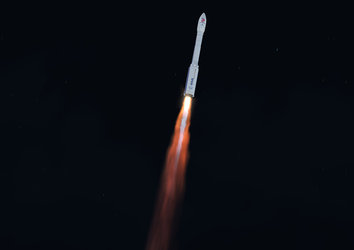
LISA Pathfinder launch (A)
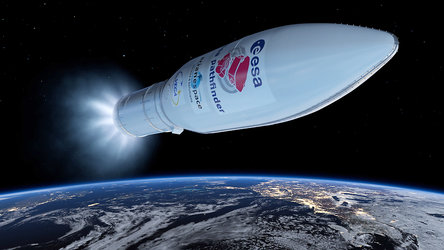
LISA Pathfinder launch (B)
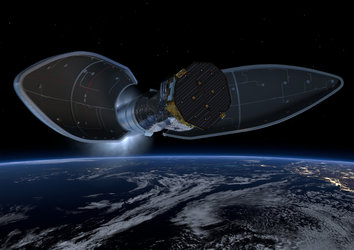
LISA Pathfinder launch (C)
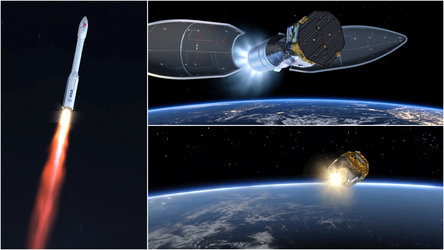
LISA Pathfinder launch sequence
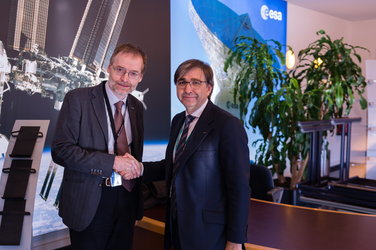














 Germany
Germany
 Austria
Austria
 Belgium
Belgium
 Denmark
Denmark
 Spain
Spain
 Estonia
Estonia
 Finland
Finland
 France
France
 Greece
Greece
 Hungary
Hungary
 Ireland
Ireland
 Italy
Italy
 Luxembourg
Luxembourg
 Norway
Norway
 The Netherlands
The Netherlands
 Poland
Poland
 Portugal
Portugal
 Czechia
Czechia
 Romania
Romania
 United Kingdom
United Kingdom
 Slovenia
Slovenia
 Sweden
Sweden
 Switzerland
Switzerland

























